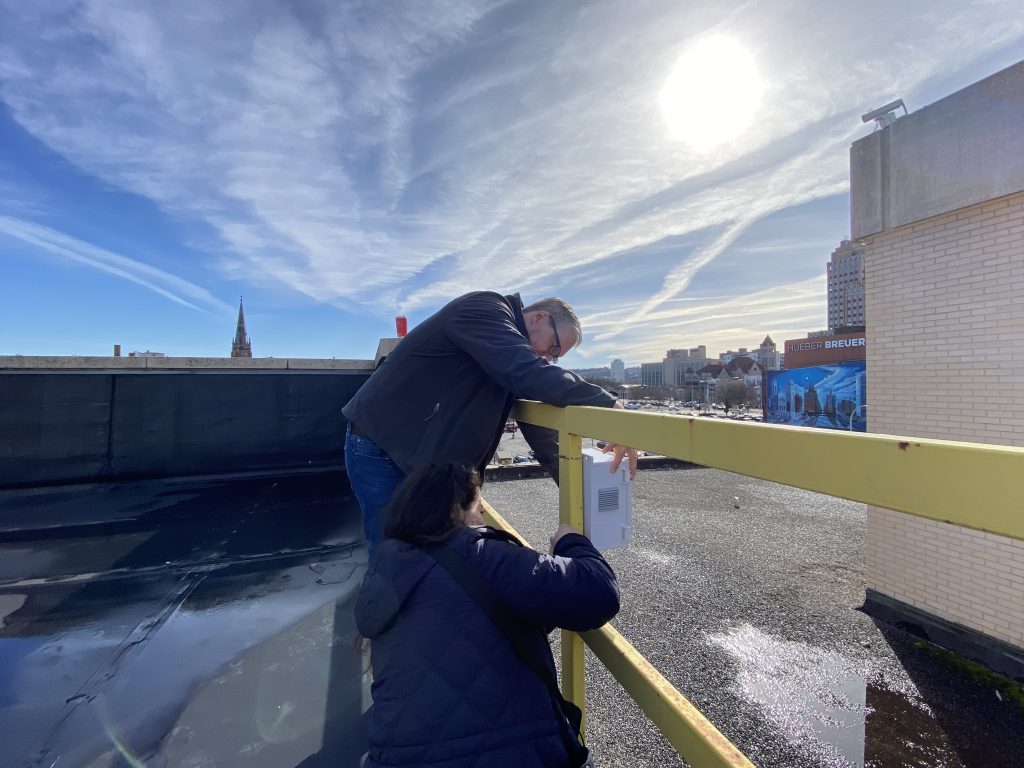The environmental and economic landscapes of Syracuse are expected to undergo substantial change over the next several years. The city’s transformation is being driven by major urban developments; most notably, the demolition and reconstruction of the Route 81 highway and the establishment of a Micron chip manufacturing facility directly north of Syracuse (Clay). Both ventures are expected to stimulate Syracuse’s economy and create new residential and work opportunities, with improved access to the city’s downtown areas and potential job openings at the nearby Micron facility.
As Syracuse undergoes this transformative phase, there is a growing need to assess and understand possible implications for the city’s environmental quality. The major roadway reconstruction, coupled with an influx in population and vehicular activity anticipated with Micron’s new manufacturing facility, is poised to impact pollutant concentration (e.g., PM2.5 and VOCs), environmental health and well-being of Syracuse communities.
Researchers from local institutions, including Syracuse University, SUNY College of Environmental Science and Forestry, and SUNY Upstate Medical University are collaborating with community partners to better understand the environmental and health impacts of the city’s major upcoming developments. These researchers are working toward the deployment of an environmental monitoring network to provide baseline data needed to fully assess the impact of large events, including the I-81 reconstruction, wildfire and smoke/smog migration, Micron manufacturing facility development and the associated urban development, and current and future climate changes within Syracuse communities.
The testbed capability of SyracuseCoE is playing a central role in environmental quality data collection, as a team of SyracuseCoE faculty, staff and research graduate students have been working on the development of a multiscale physical testbed and modeling/simulation platform in support of various multi-disciplinary industrial-academic collaborations. When complete, testbed capabilities will include environmental monitoring for both indoor and outdoor air quality, power consumption metering, site energy monitoring, as well as individual labs for testing and evaluating sensors, devices, equipment and control algorithms.


“With one-of-a-kind research facilities, SyracuseCoE is uniquely poised to serve as a multiscale testbed for studying air pollution and environmental quality,” explained Jianshun “Jensen” Zhang, Professor of Mechanical and Aerospace Engineering in the College of Engineering & Computer Science at Syracuse University and Executive Director of SyracuseCoE. “We look forward to advancing research that supports improved air quality and public health.”
“We at Upstate Medical have a strong interest in the health impacts of the I-81 project,” said David Amberg, Vice President for Research at SUNY Upstate Medical University. “This is not only because the bulk of our facilities are adjacent to the major work of the project and because of the potential impacts to our employees, as well as our patients that live adjacent to the project. We are the main health care provider for these neighborhoods. Upstate does not have expertise in environmental monitoring, so we are lucky to be able to work with SyracuseCoE as they have very strong expertise in this area. What Upstate does have the ability to do is to determine if the I-81 project is impacting the health of our communities and to correlate that back to changes in air quality.”
The multi-institutional research team is looking to monitor, study and forecast the city’s environmental quality with three distinct objectives: developing and deploying an urban and building air quality field testbed, developing an innovative modeling approach and simulation platform to predict the behavior of various pollutant concentrations in- and outdoors throughout Syracuse, and conducting assessments of present and future urban microclimate and air quality in various Syracuse neighborhoods.
The team aims to meet these objectives with the overall goals of understanding the potential effects of pollutant exposure on cardiovascular health disorders among different Syracuse communities, and identifying disparities in environmental quality that might guide the development of multiscale cost-effective and energy-efficient strategies for reducing the exposure of disproportionately impacted populations to pollutants of concern.
The integration of comprehensive monitoring networks, capturing real-time data on pollutants and environmental conditions, offers Syracuse institutions and occupants alike a deeper understanding of the dynamic interplay between urbanization and public health. Ultimately, the team’s efforts are crucial in exemplifying Syracuse’s transformation as urban development done right: aligning economic vibrance with environmental sustainability and optimal public health.
